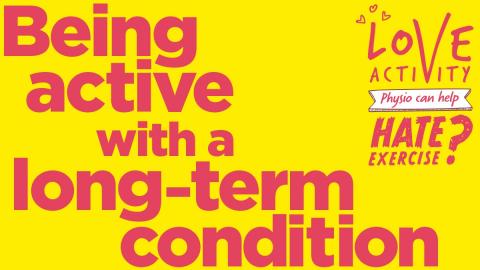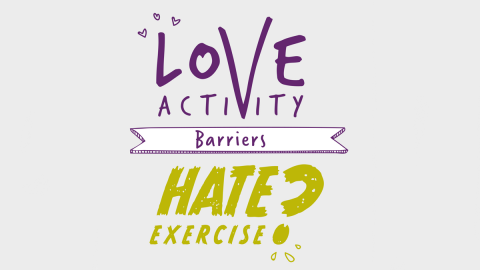From rotator cuff tears to patellar tendinopathy, physiotherapy helps with a host of common tennis injuries. Get the expert view below.
On this page:
The impact of tennis injuries can be reduced by careful management of swelling, protection of the injured structures from further injury, and by enlisting the support of a chartered physiotherapist.
Collateral tissue damage can be minimised by following the POLICE or PRICE guidelines, standing for protection, optimal loading/rest, ice, compression and elevation.
Current evidence as published by the Association of Chartered Physiotherapists in Sports & Exercise Medicine (ACPSEM) should be followed to minimise collateral tissue damage.
- Protection: splints, taping, crutches, modifying activity
- Optimal loading/rest: load the tissues relative to their state of injury and repair
- Ice: cold compress, cold water immersion
- Compression: strapping, compression garments
- Elevation: place injured part higher than the heart
Painkillers such as paracetamol can be very effective in controlling pain associated with tennis injuries.
Anti-inflammatories are not recommended in the first 5-7 days after injury, as inflammation is the body’s way of healing.
Swelling needs to be managed, but stopping inflammation from occurring at all is not advised.
A chartered physio will perform a thorough assessment to evaluate how well joints and muscles are functioning.
In addition the physio will assess muscle power, strength and endurance as well as balance, co-ordination and joint position awareness.
Injured players will be guided from the initial phase after the injury to the end phase of return-to-play testing.
It is important to rehabilitate fully after any injury as failure to do so often leads to re-injury often resulting in a longer period off play.
Rotator cuff impingement
What is it?
This occurs when there is insufficient space in the shoulder region for the soft tissues. This may be due to localised swelling or thickening, or may be a consequence of issues further afield in the movement chain.
How does physiotherapy treat rotator cuff impingement?
A thorough joint, soft tissue and movement examination is undertaken. Resolving stiffness and tightness, and re-educating movement control are vital to restore normal function.
Diagnostic injection or investigations are sometimes required.
Rotator cuff tear
What is it?
The rotator muscle complex provides stability and controls movement of the shoulder joint. Tears may be due to overuse or acute trauma.
How does physiotherapy treat rotator cuff tears?
Acute soft tissue management as evidenced by the PRICE guidelines (above) should be undertaken to reduce secondary damage from swelling. Simple painkillers may be taken but anti-inflammatories should be avoided at this stage.
Once again a thorough examination will guide the treatment plan which may include mobilisations, soft tissue techniques, taping, acupuncture and other physiotherapy modalities.
The physiotherapist will write a graded rehabilitation plan including return to play testing.
Shoulder injuries: famous tennis examples
Maria Sharapova had surgery to repair two rotator cuff tears in 2008 and has since suffered other problems with her shoulder.
Lower back pain
What is it?
This is very common among tennis players because of the repetitive nature of the game and the demands of the strokes, especially serving. Acute pain may result from a sudden stretch or fall or ongoing ache may be experienced.
Physical conditioning is very important to minimise the risk of low back pain in recreational as well as elite tennis players.
How does physiotherapy treat lower back pain?
A full assessment of movement control, flexibility, strength and endurance will guide the treatment and rehabilitation plans.
The physio may use hands-on techniques for joints and soft-tissues, taping, acupuncture, exercise prescription, and practical advice.
Back injuries: famous tennis examples
Roger Federer has suffered long-term issues with his back that he manages with core strength training and by playing fewer tournaments, while Andy Murray underwent surgery last year to address a long-standing problem.
Wrist sprain
What is it?
The wrist contains many small joints and ligaments and has a cartilage structure, TFCC, like the knee meniscus, which can be injured.
How does physiotherapy treat wrist sprain?
The physiotherapist will follow the PRICE guidelines (above) and may protect the joint with a splint or strapping. A full examination will be undertaken to determine which structures are involved.
A graded exercise program, including return to play testing, will be undertaken alongside hands-on treatments.
Carpal tunnel syndrome
What is it?
This condition occurs when the median nerve that passes through the wrist is compressed, causing pain throughout the hand, wrist and forearm.
How does physiotherapy treat carpal tunnel syndrome?
The first priority is to reduce any swelling in the carpal tunnel region and ensure the forearm muscles are functioning properly.
An assessment of the neck and neural system will be done to rule out any problems further up the movement chain.
An assessment of racquet grip and tennis stroke may help to identify any technical issues.
Wrist injuries: famous tennis examples
Juan Martin Del Potro has suffered serious injuries to both wrists that have been reported as career-threatening. Nikolay Davydenko is another player to have struggled with a wrist injury.
Patellar tendinopathy
What is it?
This injury involves pain in the tendon that connects the kneecap (patella) to the top of one of the shin bones (tibia) and is usually caused by overuse. It can be either acute or chronic in nature.
How does physiotherapy treat patellar tendinopathy?
Management of inflammation and restoration of movement range and control are key factors in this condition also. Supportive taping or splinting may be used to allow the player to continue.
This condition need not stop a tennis player from playing, but the physiotherapist may suggest modifications to the amount or intensity of play.
Medial collateral ligament (MCL) sprain
What is it?
This ligament limits excessive sideways movement of the inner side of the knee joint.
It has close links with the knee meniscus (cartilage) and the anterior cruciate ligament. The Unhappy Triad is the name given when all three structures are injured together.
MCL injuries can vary from overuse strains to full ruptures. A ruptured MCL may be managed conservatively or surgically.
How does physiotherapy treat medial collateral ligament sprain?
Immediate treatment involves the PRICE guidelines (above). Protection may be offered in the form of bracing and / or use of crutches. Painkillers can be used but anti-inflammatories should be avoided in the immediate aftermath of the injury.
Restoration of normal range of motion is one of the first targets even if weight bearing is still reduced. Movement control including balance and co-ordination skills will form part of the rehabilitation plan along with hands-on techniques and strengthening.
The physiotherapist will guide the patient through graded exercises from squatting and lunging type exercises to jumping, hopping and landing skills.
Knee injuries: famous tennis examples
Rafa Nadal suffers knee tendonitis that requires ongoing management, while Richard Krajceck battled back from a severe knee ligament injury to win further tournaments.
Calf strain
What is it?
Injuries to the calf complex can affect the deep and superficial calf muscles, the Achilles Tendon and the Plantar Fascia of the foot.
How does physiotherapy treat calf strain?
Immediate treatment involves the PRICE guidelines (above). Protection may be offered in the form of bracing and / or use of crutches. Painkillers can be used but anti-inflammatories should be avoided in the immediate aftermath of the injury.
Restoration of normal range of motion is one of the first targets even if weight bearing is still reduced. Movement control including balance and co-ordination skills will form part of the rehabilitation plan along with hands-on techniques and strengthening.
The physiotherapist will guide the patient through graded exercises from squatting and lunging type exercises to jumping, hopping and landing skills.
Sprained ankle
What is it?
The most common injury is a strain to the lateral (outside) ligament but the deltoid ligament on the inside/medial side of the ankle can also be injured. Excessive strain on the ankle where it ‘rolls out’ can cause the lateral ligament to stretch or rupture and medial ligament to compress and get squashed.
How do physiotherapists treat sprained ankle?
Immediate treatment involves the PRICE guidelines (above). Protection may be offered in the form of bracing such as a walking boot, and / or use of crutches. Painkillers can be used but anti-inflammatories should be avoided in the immediate aftermath of the injury.
Restoration of normal range of motion is one of the first targets even if weight bearing is still reduced. Movement control including balance and co-ordination skills will form part of the rehabilitation plan along with hands-on techniques and strengthening.
The physiotherapist will guide the patient through graded exercises from squatting and lunging type exercises to jumping, hopping and landing skills.
Cramp
What is it?
Muscle spasm which may last from a few seconds to minutes is described as cramp. This condition is poorly understood phenomenon but dehydration and poor physical conditioning may be factors.
How does physiotherapy treat cramp?
Addressing issues such as stiff joints, tight muscles, weakness and endurance can help to minimise the risk of cramp in tennis players. Immediate care may include soft-tissue release, strapping and off-loading the area by using crutches.







































